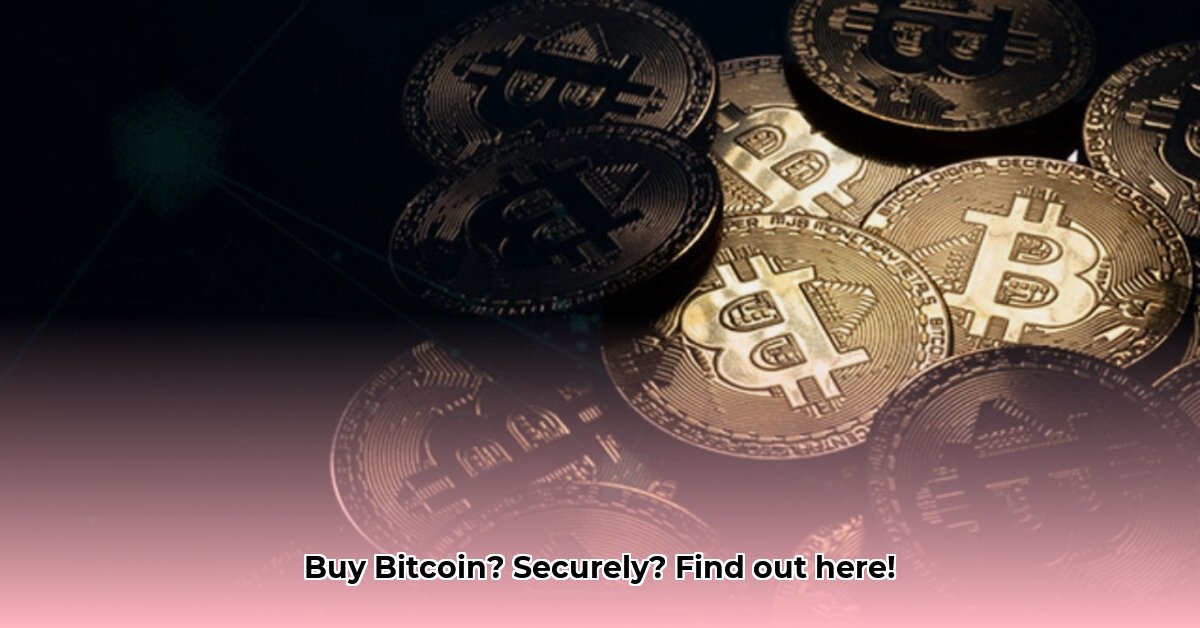
Thinking about buying Satoshi (SATS), the smallest unit of Bitcoin? This comprehensive guide provides a step-by-step walkthrough of how to safely purchase and store SATS, emphasizing security and risk management. The cryptocurrency market is highly volatile, and understanding the risks is crucial before investing.
Picking the Right Platform: Choosing a Reputable Exchange
Selecting a secure and reliable cryptocurrency exchange is paramount. Numerous exchanges exist, but not all are created equal. Consider these crucial factors:
Security: Prioritize exchanges with robust security measures such as two-factor authentication (2FA) (an extra layer of security requiring a code from your phone or another device) and cold storage (offline storage of the majority of cryptocurrency assets to protect against hacking). A lack of these features significantly increases your risk.
Trading Volume: High trading volume generally indicates better liquidity (the ease with which an asset can be bought or sold), allowing for quicker transactions. However, high volume alone doesn't guarantee trustworthiness.
Fees: Carefully compare trading fees (charged on each transaction), deposit fees, and withdrawal fees across different platforms. Hidden fees can significantly impact your returns.
Reputation: Thoroughly research the exchange's reputation. Read reviews on independent forums and websites to gauge user experiences with security and customer support. Look for consistent positive feedback.
Regulatory Compliance: While not all exchanges are regulated, those that are may provide an additional layer of consumer protection, though regulations vary significantly across jurisdictions.
A comparative table (note: data changes frequently, always independently verify):
| Exchange | Security Features | Estimated Fees (Example) | Reputation (General) | Regulatory Status (Example) |
|---|---|---|---|---|
| Exchange A | 2FA, Cold Storage, Advanced Security Protocols | 0.1% trading fee + variable withdrawal | Excellent based on user reviews | Registered and licensed in [Country X] |
| Exchange B | 2FA, Cold Storage, KYC/AML | 0.2% trading fee + flat withdrawal fee | Good, some minor complaints | Registered in [Country Y], under review for stricter regulations |
| Exchange C | 2FA, some other security measures | 0.15% trading fee + high withdrawal fees, limited payment options | Fair, mixed reviews, some security concerns | Unregulated |
Your Digital Vault: Setting Up a Wallet
Before purchasing SATS, you need a digital wallet – your secure storage for your cryptocurrency. Two main types exist:
Hot Wallets: Online wallets, convenient but vulnerable to hacking.
- Pros: Easy access, user-friendly interfaces.
- Cons: Increased risk of theft due to internet connection.
Cold Wallets: Offline wallets, offering significantly enhanced security.
- Pros: Maximum security, less susceptible to online threats.
- Cons: Less convenient access, may require more technical knowledge.
A balanced approach often involves using both: a hot wallet for smaller amounts and a cold wallet for larger holdings. Hardware wallets are a popular choice for cold storage.
Buying SATS: A Step-by-Step Guide
Create an Account: Register on your chosen exchange following their instructions. Use a strong, unique password.
Verify Your Identity (KYC): Most exchanges require KYC verification (providing identification documents) to comply with anti-money laundering regulations.
Fund Your Account: Deposit funds using your chosen payment method (credit/debit card, bank transfer, etc.).
Place Your Order: Locate the SATS trading pair (e.g., SATS/USD, SATS/BTC) and specify the amount of SATS you wish to buy. Double-check all details before confirming the order.
Withdraw to Your Wallet (Optional): Transfer your purchased SATS to your secure wallet for extra protection. Verify the wallet address meticulously before initiating the transfer.
Protecting Your Assets: Top Security Practices
Security negligence can lead to significant losses. Prioritize these practices:
Strong Passwords: Use unique, complex passwords for every account.
Enable 2FA: This is crucial for enhancing account security and preventing unauthorized access.
Phishing Awareness: Be wary of suspicious emails or messages requesting login credentials or private keys; legitimate exchanges will never request such information.
Software Updates: Keep your wallet software and exchange apps updated to benefit from the latest security patches.
Managing the Risks: Investing Smartly
Cryptocurrency investments are inherently risky. The value of SATS can fluctuate dramatically. Only invest money you can afford to lose. Consider these risk-mitigation strategies:
Diversification: Don't put all your eggs in one basket. Spread your investments across various cryptocurrencies to reduce risk.
Stop-Loss Orders: Utilize stop-loss orders (automatic sell orders triggered when the price falls below a specified level) to limit potential losses.
Thorough Research: Understand the technology, team, and market risks associated with any cryptocurrency before investing.
The Ever-Changing Rules: Understanding Crypto Regulations
Cryptocurrency regulations are dynamic and vary significantly by jurisdiction. Be aware of the legal landscape in your region to ensure compliance. The regulatory environment is constantly evolving, so stay informed.
Disclaimer: This guide is for informational purposes only and does not constitute financial advice. Investing in cryptocurrency involves significant risk, and you could lose your entire investment. Consult a qualified financial advisor before making any investment decisions.